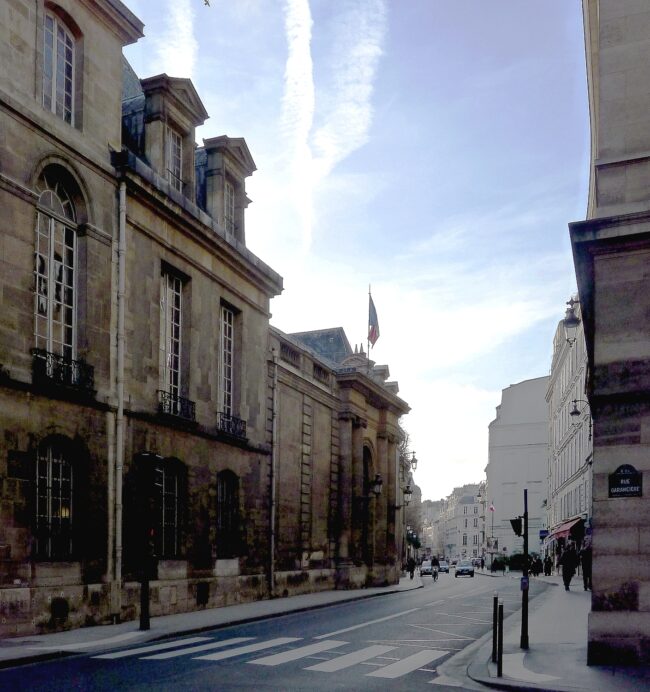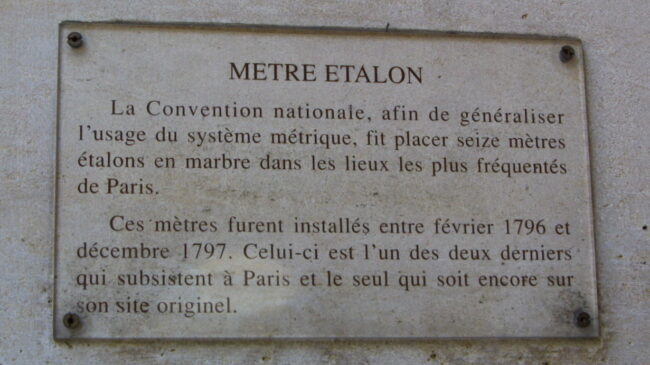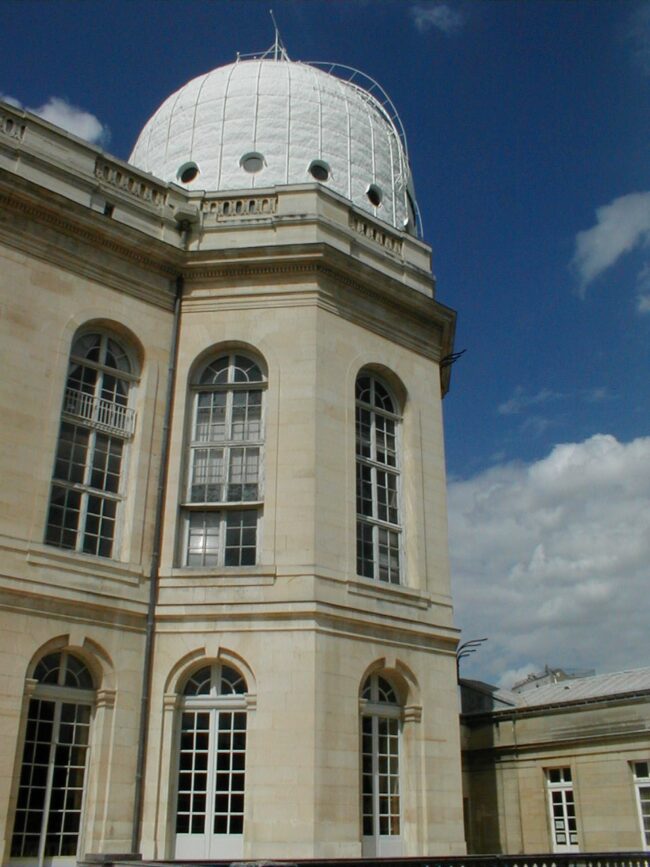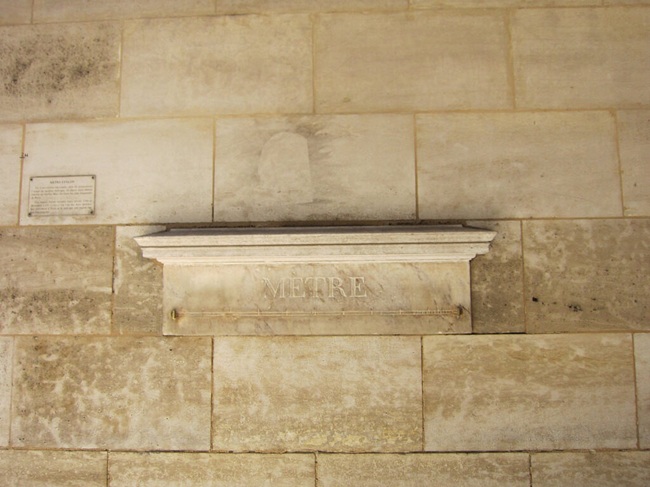The Last Meter: A Hidden Monument in Paris
- SUBSCRIBE
- ALREADY SUBSCRIBED?
BECOME A BONJOUR PARIS MEMBER
Gain full access to our collection of over 5,000 articles and bring the City of Light into your life. Just 60 USD per year.
Find out why you should become a member here.
Sign in
Fill in your credentials below.
Across the road from the Jardin du Luxembourg, affixed to the façade of 36 rue de Vaugirard, lies a curious piece of history that most passersby never notice: one of the last remaining “meter standards” from the French Revolution. This simple marble slab, marked with a horizontal line and worn by centuries of exposure, represents one of humanity’s most ambitious attempts to bring order to the chaos of measurement.
A revolutionary idea
In the late 18th century, France was drowning in a sea of confused measurements. Every region, every town, and sometimes even individual markets had their own standards for length, weight, and volume. A “foot” in Paris wasn’t the same as a “foot” in Lyon. This confusion wasn’t just inconvenient — it was stifling commerce and scientific progress.
The French Revolution, with its passion for rationality and standardization, decided to solve this problem once and for all. In 1791, the French Academy of Sciences proposed a radical solution: a new unit of measurement based not on arbitrary royal standards, but on nature itself. They defined the meter as one ten-millionth of the distance from the North Pole to the equator, measured along the meridian passing through Paris.

The rue de Vaugirard in front of the Palais du Luxembourg which houses the Senate. Photo: Mbzt / Wikimedia commons
To help the public adapt to this new system, the revolutionary government installed 16 marble meter standards throughout Paris between 1796 and 1799. These public references, carved from marble and fixed to prominent buildings, allowed merchants and citizens to check their measuring sticks against an official standard.
Today, only two of these original standards remain. The one at 36 rue de Vaugirard is perhaps the best preserved, offering modern visitors a tangible link to this revolutionary moment in the history of science. The marble slab shows a horizontal line representing exactly one meter, along with an inscription that has largely weathered away over the centuries.

The plaque at the “mètre étalon” on rue de Vaugirard. Photo: Edhral / Wikimedia commons
A walking tour of measurement history
For those interested in the history of measurement, Paris offers several other fascinating sites:
The Conservatoire National des Arts et Métiers houses the original platinum meter bar that served as France’s primary standard from 1799 to 1889. This precisely crafted metal bar, known as the “Mètre des Archives,” represents the culmination of the revolutionary project to standardize measurement.
Near the Luxembourg Gardens, visitors can find the Paris Meridian markers, brass strips embedded in the ground that trace the meridian line used to calculate the original meter. These strips, installed in the 19th century, mark the famous “Paris Meridian” that competed with Greenwich for recognition as the prime meridian until 1884.
The Observatory of Paris, where much of the original calculation work was done to establish the meter, still stands. Though the interior is rarely open to the public, the building itself is a monument to scientific ambition.

Paris Observatory. Photo: FredA/ Wikimedia commons
Legacy of the Meter
The modest marble standard at rue de Vaugirard might seem insignificant today, when we can measure distances to atomic precision. Yet it represents a pivotal moment in human history — when we first attempted to create a truly universal system of measurement based on nature rather than arbitrary human standards.
The metric system that began with these marble standards has become the global language of science and commerce. Today, only three countries — Myanmar, Liberia, and the United States — haven’t officially adopted the metric system as their primary system of measurement.
The next time you’re in Paris, take a moment to visit this humble monument at 36 rue de Vaugirard. That simple line carved in marble represents one of humanity’s first steps toward a more rational, standardized world — a world where a meter in Paris means the same thing as a meter in Tokyo, New York, or anywhere else on Earth.
For those interested in visiting, the meter standard can be found on the exterior wall of 36 rue de Vaugirard, near the intersection with rue Condé. It’s a short walk from the Luxembourg Garden and makes for an interesting stop on any walking tour of scientific Paris.
Lead photo credit : Meter standard in Paris. Photo Credit: Allison Meier/ Wikimedia Commons




